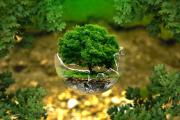Water and Energy
It is often a surprise to learn how much energy is embedded in the water we consume. Although it is more apparent when we are using heated water for showers, washing our hands, or doing the laundry, even cold water comes to our tap having been pumped and treated at great energy cost to the local water utility. A large amount of energy is used to pump, convey, treat, and deliver water, and much more energy is consumed to heat water at the consumer level. Energy is also required to collect, treat, and discharge wastewater.
The same is true on the energy side of the equation. When we turn on the lights, watch television, listen to the stereo, grab a cold beer from the refrigerator, or use a hair dryer, the amount of water used to create the electricity we are consuming is usually not top of mind. Large quantities of water are embedded in the energy we use, since water is used in the production of energy, primarily for cooling purposes.
When water or energy resources are managed, it is often with a siloed focus on each and not on the deep connection that exists between water and energy. This is often called the “water-energy nexus.”





